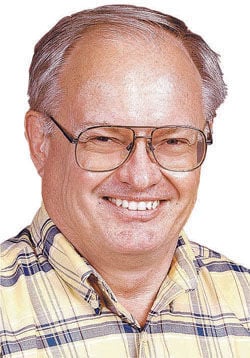In a powerful and unprecedented display of national solidarity, American river cities united in 1990 during the First Gulf War, illuminating their waterways in a poignant tribute to deployed service members. This extraordinary historical event, a demonstration of profound patriotic unity, saw communities across the heartland come together in a way never witnessed before or since, underscoring the deep connection between the home front and those serving overseas.
The early 1990s marked a period of significant global tension as Operation Desert Shield transitioned into Operation Desert Storm. As American forces deployed to the Persian Gulf, a palpable sense of anxiety and anticipation gripped the nation. Amidst this backdrop, the desire to support the troops and foster a sense of collective resolve became a unifying force, leading to spontaneous acts of American solidarity that transcended geographical boundaries.
On December 11, 1990, more than 40 cities along the sprawling network of middle American rivers participated in a unique “lights on the rivers” celebration. From the northern reaches of Bismarck, North Dakota, to the bustling port of New Orleans on the Mississippi, and stretching along the Ohio from Cairo, Illinois, to Pittsburgh, this synchronized effort transformed the nation’s waterways into beacons of hope and defiance. It was a testament to the community spirit prevalent in these towns.
The spectacle involved an armada of towboats, powerful vessels typically navigating commerce, redirecting their immense spotlights skyward. These beams of light pierced the crisp, clear night air, creating a striking visual message of unwavering support for American soldiers and sailors stationed thousands of miles away. The collective effort was designed to send a powerful signal that while troops were far from home, they were not forgotten by their nation.
Witnesses of the event recounted a night filled with raw emotion. The December breeze, though chilling, only served to make candle flames dance, their flickers reflecting on tears of both sorrow and pride in the eyes of hundreds who gathered along the riverbanks. This powerful public demonstration served as a communal catharsis, allowing citizens to express their anxieties and hopes for their loved ones in uniform.
A sentiment frequently expressed by those serving abroad at the time highlighted the stark contrast between their reality and the idealized vision of home. One soldier remarked, “It would have done my heart a lot of good to have known this was going on at home instead of what was.” This quote encapsulates the deep yearning for connection and reassurance that such events provided, promising a “different atmosphere” upon their return.
This remarkable 1990s event stands as a singular moment in American history, an unparalleled outpouring of military support orchestrated by ordinary citizens. It predates many of the more formalized national observances that would emerge in later conflicts, making its spontaneous and widespread nature all the more significant. The “lights on the rivers” demonstrated an organic national pride that resonated deeply.
The legacy of that night endures as a powerful reminder of how communities can rally during times of national crisis, fostering a pervasive sense of American solidarity. While the specifics of the First Gulf War have receded into historical memory for some, the underlying message of unwavering support for service members and the extraordinary acts of unity on the homefront continue to inspire. It was a true display of collective strength and enduring community spirit.






Leave a Reply